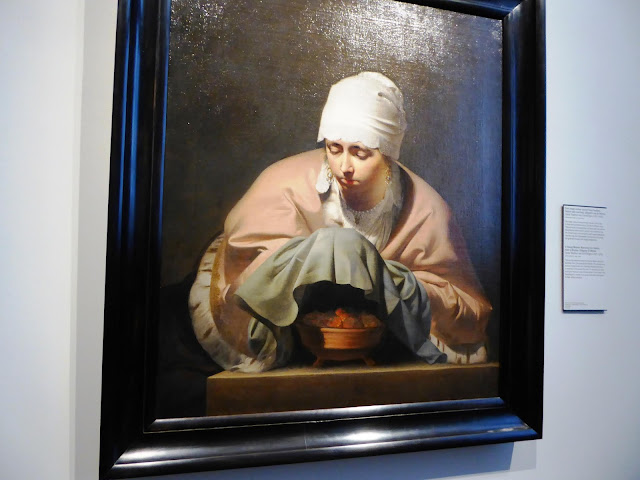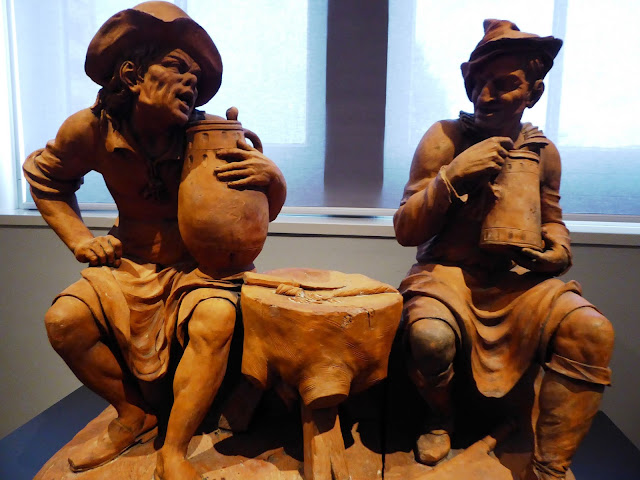Amsterdam is a young city by European standards. After the floods of 1170 and 1173, locals near the river Amstel built a bridge over the river and a dam across it, giving its name to the village: "Aemstelredamme". The earliest recorded use of that name is in a document dated October 27, 1275. Amsterdam is the capital of the Netherlands although it is not the seat of the government, which is The Hague.
Amsterdam has more than 100 kilometres of canals, most of which are navigable by boat.
Amsterdam has a rich architectural history. The oldest building in Amsterdam is the Oude Kerk (Old Church), at the heart of the Wallen, consecrated in 1306. The oldest wooden building is Het Houten Huys at the Begijnhof. It was constructed around 1425 and is one of only two existing wooden buildings. It is also one of the few examples of Gothic architecture in Amsterdam.
Amsterdam’s oldest houses, with their ornate gabled façades, are a national treasure. Many of these stunning examples of architecture, found around the city’s Canal Ring, date back to the Dutch Golden Age when a building tax was calculated by the width of a property’s façade. The house typically referred to as the narrowest in Amsterdam was built around 1600 at Oude Hoogstraat. It stands at a minuscule 2.02 metres wide and only 5 metres deep, with just one small room on each floor. The house at Singel 7 is unique in its structure, with a façade that is just over one metre wide. Standing between two much larger houses, it makes for a striking photograph, with arms outstretched in front of it. However, this is just the back of the house; the front is considerably wider.
The Trippenhuis (trip's house) at Kloveniersburgwal 29 is the widest house in Amsterdam, which was built between 1660 and 1662 for brothers Lodewijk and Hendrick Trip. This palatial space even hosted the Rijksmuseum between 1816 and 1885, before it moved to its current location. However, its impressive neoclassical architecture mirrors that of an extremely narrow house across the street. As the story goes, the brothers commissioned the second house for their coachman after he remarked that he would be delighted with a house as wide as his masters’ front door. Amsterdam’s Trompettersteeg (Trumpeter Alley) is another unusual example of narrow urban spaces. This skinny street in the Red Light District is just one metre wide
August 22
Our first full day we were up real early, had to wait for breakfast to start at 7 AM. After that we headed out and about. Again it was too early for anything to be open, but by 9AM the Hop On Hop Off boat office was open and we bought tickets that would take us around the canals to see the highlights of the city.
The locals checking out the tourists
And, we are on our way
Our first stop of the day was the A'dam lookout - where we could get a great 360 degree view over the city
River cruise ships waiting for a new crop of cruisers
On the left i the A'dam Lookout - the more interesting looking building on the right is the
Eye Film Museum, the building looks like a stylized eye
Lots of traffic on the water - the long building is the Amsterdam Central train station. There is even a little boat with three people fishing, in the middle of it all
At the top of the Aèdam Lookout is a giant swing that takes you out over the edge of the building - for brave souls only.
For my trucking brothers - a marine B-train
Next stop was the Anne Frank house. We opted not to try and get in as the lines where extremely long, and only a limited number of people can be let in at anyone time. So we did a bit more canal cruising to the next stop, he Rijksmuseum, the national museum of the Netherlands. It has many great 1600 and 1700 paintings, the most famous of which is the Night Watch by Rembrandt. We picked up our tickets for an next day admission.
After that we continued our boat tour and made a stop at the city hall and the daily flea market that has bee running there for decades. Didn't find anything compelling to buy. All in all we spent about 8 hours getting on and off the boat - these are some of the things we saw along the way.
All that keeps car from going into the canal is that small etal railing
different styles of roof tops
short and tall,, all together - there are no really tall building in Amsterdam because the soil substrate an not support the weight of taller building.
Four different roof styles - all the buildings along the canal, are equipped with a jib and pulley out from the peak. The purpose of this is to get merchandise, furniture up to the upper floors of the building. Because the houses are so narrow, it is difficult to get stuff up the equally narrow stairs. Also, all these houses lean out at the top, for the most practical of reasons - when you are hoisting your items up into the building, you don't want to be continually hitting your building - bad for the building and the merchandise.
This building, becaused it faced 2 streets was tilted forward on two sides.
Aug 23
Well not a good start to the day. We meant to get up at a decent hour and get out and do some museum touring. Well, as they say "best laid plans...", we both slept in getting up at 10 AM - jet lag still in effect! Finally got to the Rijksmuseum about 1PM. Some of the beautiful things we saw.
Galle glas, ceramics, brass work, ceramics
African market miniature model
Opium sampling set
African speers
Lombok hoard
Shadow box diorama
Mosque lamp
Tiffany pitcher
Ostrich body made of Nautilus shell
This is actually a pitcher
Containers made of Nautilus shells
Vessel made of carved coconut shell
This object is actually a pitcher
Vssels carved from solid amber (pine pitch)
another pitcher
very intricate carving on the base of this bowl
Flemish tapestry from the 1600's
Intricately carved and inlaid box with drawers
Beautifully fine balance scale and counter balance
Vessels carved from solid rock crystal
Banquet still life
I am getting tired and cranky
Very ornate cradle from a merchant ship
This tapestry is about 100 years newer (1700's) than the last one but the colours are so much more vibrant
amazing detail of above picture
Drinking game vessels
I don't thing these two needed any game to enjoy their drink
again, fine detail of painting
stained glass windows in the museum
something not to run a fowl of
And finally, the famous picture itself, Rembrandt's "the Night Watch"

















































































